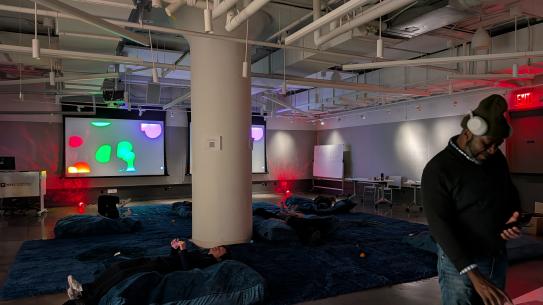Wake-up Call: study finds cell phones increase students' risk-taking
 |
| Study co-author: Richard E. Wener, Ph.D., Associate Professor of Environmental Psychology and Department Head of Humanities and Social Sciences |
For today’s college students who came of age at the same time the cell phone did – from 1996 to 2006, the number of U.S. cell phone users exploded from 34 million to 203 million – life without one is just about unthinkable.
College students rely on their cell phones for much more than staying connected with friends and family though. A study co-authored by Poly’s Richard E. Wener, an associate professor of environmental psychology and head of the Department of Humanities and Social Sciences, suggests that cell phones make students feel safe in situations such as walking alone after dark. However, that sense of security may be a false one.
Professor Wener conducted the study with Jack Nasar of Ohio State University and Peter Hecht of Temple University in Philadelphia. Their results were published in a recent issue of the International Journal of Urban and Regional Research.
They found that about three-quarters of students feel somewhat or a lot safer when carrying a cell phone while walking alone at night. 40 percent of cell phone users said they walked somewhere after dark that they normally wouldn’t go.
Women in the study reported a greater sense of safety from carrying their cell phones. When asked if they would walk somewhere after dark that they normally wouldn’t go, 42 percent of women versus 28 percent of men said that they would. A researcher explained the difference by saying that women likely feel more vulnerable in the first place.
There’s no evidence to suggest that having a cell phone makes someone safer; in fact, the sense of safety it provides can put people in risky environments or situations that they wouldn’t be in if they didn’t have the cell phone and the feeling of security it provided.
Professor Wener describes this counterintuitive phenomena as “risk homeostasis” and compared it to the way better brakes on a car can cause some to drive faster than they usually would.
Another component to safety is the impact cell phones have on “situational awareness,” i.e., a person’s sense of what’s around him/her.
Professor Wener and his colleagues found that 48 percent of cell phone users crossed a busy road in front of approaching cars, compared to only 25 percent of those not using phones.
“The brain evolved a long time before advances like the cell phone did,” explains Professor Wener, “and may not be able to handle so many tasks at the same time. “When you’re on a cell phone and about to cross a street, you’re focusing on the conversation which requires brainpower to pick up on social cues and formulate responses. That makes it hard to pay attention to the cues needed to safely cross the street – How fast are the cars moving? Is the light about to change? In any multitasking situation, you’re going to lose out on something.”
Professor Werner says that no one is going to give up their cell phones and agrees that they’re useful tools. He thinks that students should understand the limitations of cell phones and employ some common sense when using them.
He and his co-authors also suggest that the results of their study be included in schools’ safety lectures to incoming students.



